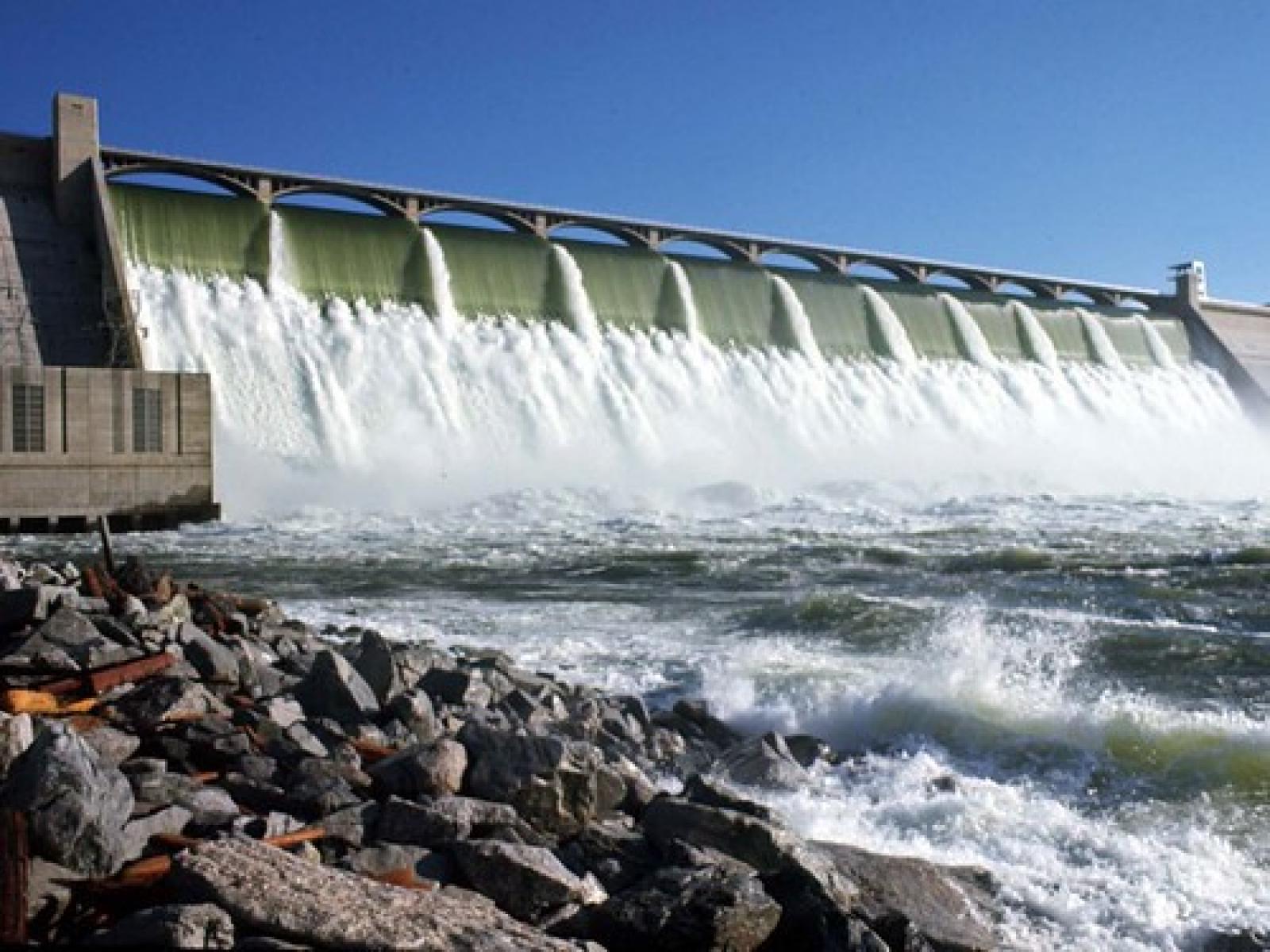Identifying Water’s Scale-Specific Impacts on Resilient Electricity System Design
Understanding water’s influence on resilient electricity system design provides opportunities for joint water-electricity planning and operations

Considering electric operations and water availability at various scales—from local to regional and the entire grid—helps researchers take a new water-based resilience diagnosis approach to evaluating the electricity sector.
"Grand Coulee Dam" by Bureau of Reclamation is licensed under CC BY-SA 2.0
The Science
Major water systems in the U.S. play a fundamental role in bulk power system operations, management, and reliability through hydropower operations and the cooling of thermoelectric plants. However, water’s overall contribution to resilient electricity system design is unclear. A team of researchers led by the U.S. Department of Energy’s Pacific Northwest National Laboratory conducted a study to determine and define the resilience of U.S. electricity systems as they respond to variations in water resource availability and infrastructure. Researchers defined water’s impact on electricity system design resilience according to three capabilities: persistence, adaptability, and transformability. They also evaluated these impacts at various scales—from a single power plant in a region to a large-scale power grid setting—given the unique water and electricity dynamics and decision-making opportunities found at each level.
The Impact
This research provides the first description of incremental water-electricity resilience in the U.S. that considers multiple scales of system inter-dependencies and associated ranges of system decision making. Better understanding a complex system’s gradual response at different scales—a single power plant, a power utility in an urban setting, and a large-scale power grid setting—offers direction for system designers and managers of joint water-electricity resilience and security. This work also provides guidelines for future research that explores the complex system of systems resilience, responses to stressors, and opportunities for co-evolution.
Summary
The U.S. electricity sector relies heavily on the availability and predictability of fresh water resources. Currently, 92% of all U.S. electricity generation requires water, whether as a fuel for hydropower production or as a coolant for thermoelectric power. Electric power generation is therefore vulnerable to changes in water systems. Water-related stresses and shocks are caused by droughts, evolving competition between new water users and priority allocation for senior water users, new policies, and long-term changes in water availability. In this context, water stresses and shocks include both incremental changes and rapid-onset disruptions in water availability or quality that may impact power plant and grid function beyond the range of normal operations.
Researchers applied a framework for understanding resilient systems that comprises three capabilities: (1) system persistence, (2) adaptability, and (3) transformation, which, in the context of water-electricity resilience, are defined as: (1) normal operations, (2) contingency operations or deviations from normal operations, and (3) operational redesign and/or infrastructure change. Researchers extended this resilience diagnosis approach to the bulk electricity system of the contiguous United States, with particular attention to water-driven stressors across three strategic scales that have unique water and energy operations and decision-making attributes--an individual power plant associated with one river, urban or utility-connected power plants associated with connected watersheds and one climate region, and power-grid-connected power plants associated with disconnected river basins and multiple climate regions. They found that (1) at the power-plant level, water is integrated in the design and evolution of electric system resilience; (2) at the urban/utility scale, water is a driving variable for electricity system persistence and adaptability and provides unique opportunities for transformation; and (3) at the grid scale, water is a driving variable for persistence and adaptability for interregional transfers. They determined that grid-scale electricity sector transformation focuses on decoupling to avoid water shocks, which can be considered a system-level transformation related to water. Additionally, growing water insecurity threats may also dramatically influence grid resilience and future transformations, depending on the future market response to water scarcity, the potential for decoupling energy from water, and uncertainties in technology innovation and fast-evolving demand conservation technologies. While understanding these dynamics has been the objective of many previous water-energy studies, most considered only discrete aspects of electricity sector resilience relative to specific system stressors, without combining water impacts and resilience definitions at various scales.
PNNL Contact
Jennie Rice, Pacific Northwest National Laboratory, jennie.rice@pnnl.gov
Funding
The U.S. Department of Energy Office of Science, Biological and Environmental Research supported this research as part of the Multisector Dynamics, Earth and Environmental System Modeling Program.
Published: August 11, 2020
N. Voisin, V. Tidwell, M. Kintner-Meyer, and F. Boltz. “Planning for sustained water-electricity resilience over the U.S.: Persistence of current water-electricity operations and long-term transformative plans.” Water Security 7, 100035 (2019). [DOI:10.1016/j.wasec.2019.100035].